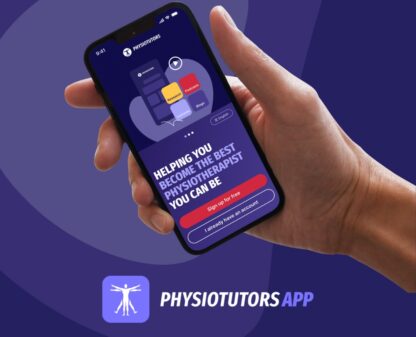Femoroacetabular Impingement Syndrome

Body Chart

- Anterior groin pain
- Pain around trochanter radiating down to the knee
Background Information
Patient Profile
- Mostly male aged 20-40
- Athlete: Predominantly in sports exposing the individual to high shear forces or repetitive end-range flexion-rotation movement of the hip joint (ice-hockey, soccer, yoga, combat sports, hurdles)
Pathophysiology

There are two morphological types of FAI:
- “Cam” (B): The femoral head is not round and cannot articulate properly with the acetabulum. Repetitive impinging exposes the cartilage to shear forces and over time causes damage at the antero-superior acetabular labrum.
- “Pincer” (C): An enlarged acetabular rim causes femoral neck impact and subsequent impinging of the labrum. The created lever leads to posterior movement of the femoral head causing damage to the cartilage.
- “Mixed”: A combination of the two (B&C)
Pain Mechanisms
Mechanical nociceptive pain, load- and movement dependent, Typical on-off mechanism; local, deep, stinging pain possibly radiating to the knee.
Impinging and shear forces lead to injury or degeneration of the labrum and joint cartilage. Initial inflammation possible.
Course
The condition remains asymptomatic in a lot of people and morphology does not necessarily dictate pathology. Furthermore, it’s not known which individuals with cam or pincer morphologies will develop symptomatic FAI.In those who are treated for FAI syndrome, symptoms tend to improve up to return-to-sport with surgical results showing improvements at 2, 5, and 10 years. Conservative treatment has shown similar success and is discussed in the treatment section. Without treatment, symptoms will probably worsen over time.
History & Physical Examination
History
Long history, patients have undergone many diagnostics/examinations/consultations and therapies, insidious onset of symptoms, there may have been a trauma.
- Local
- Stinging pain sometimes radiating to the knee
- Impinging sensation
Physical Examination
Inspection
No abnormalities, could display acute protective posture
Active Examination
Loaded flexion-rotation is painful (e.g. squats, putting on socks or shoes in standing) in acute stages even light flexion causes pain. Gluteus maximus strength may be reduced
Functional Assessment
Patient can demonstrate painful movements very well. Often sports-specific movements
Special Testing
Neurological
negative
Passive Examination
Physiological movements are restricted, especially flexion, internal rotation, and adduction of the hip. Hard endfeel due to bony impact. Muscle length of iliopsoas and quadriceps/rectus femoris may be shortened
Differential Diagnosis
For young individuals:
- Adductor strain
- Bursitis
- Ligament sprain
- Inguinal hernia
- Lumbar IVD problems
Generally applicable:
- Arthritis
- SIJ dysfunction
- Joint osteophytes
- Femoral neck fracture
- Femoral head necrosis
Treatment
Strategy
Young patients (usually athletes) are often surgically treated. Otherwise, start with conservative management. Surgical treatment only if conservative approach shows no improvement
Interventions
Conservative: Loading in pain free zone. Calm down irritation, avoid end-range movements, strengthen local muscles with focus on hip extensors, stretching of ventral muscle group (iliopsoas, rectus femoris), NSAIDs in early phase, intra-articular corticosteroid injections
Surgical: Labrum reconstruction, shaving of the acetabulum, modelling of femoral neck
References
- Leunig, M. and R. Ganz, [Femoroacetabular impingement. A common cause of hip complaints leading to arthrosis]. Unfallchirurg, 2005. 108(1): p. 9-10, 12-7.
- Horisberger, M., et al., [Femoroacetabular impingement of the hip in sports – a review for sports physicians]. Sportverletz Sportschaden, 2010. 24(3): p. 133-9.
- Philippon, M.J., et al., Clinical presentation of femoroacetabular impingement. Knee Surg Sports Traumatol Arthrosc, 2007. 15(8): p. 1041-7.
- Kusma, M., et al., [Femoroacetabular impingement. Clinical and radiological diagnostics]. Orthopade, 2009. 38(5): p. 402-11.
- J. Schwarz, „Hier kann Mobilisation Schaden“ Editor. 2010, Georg Thieme Verlag KG: Physiopraxis Die Fachzeitschrift fur Physiotherapie. p. 34-36.
- Leibold, M.R., P.A. Huijbregts, and R. Jensen, Concurrent criterion-related validity of physical examination tests for hip labral lesions: a systematic review. J Man Manip Ther, 2008. 16(2): p. E24-41.
- Leunig, M., et al., [Femoroacetabular impingement: trigger for the development of coxarthrosis]. Orthopade, 2006. 35(1): p. 77-84.
- Bahringer, K. FAI Das femoroacetabulare Impingement


